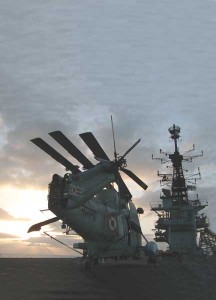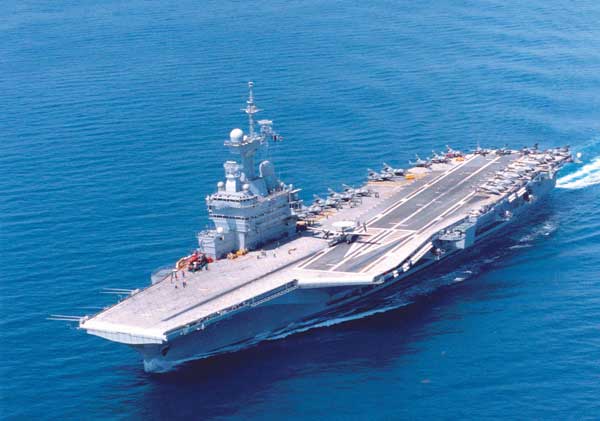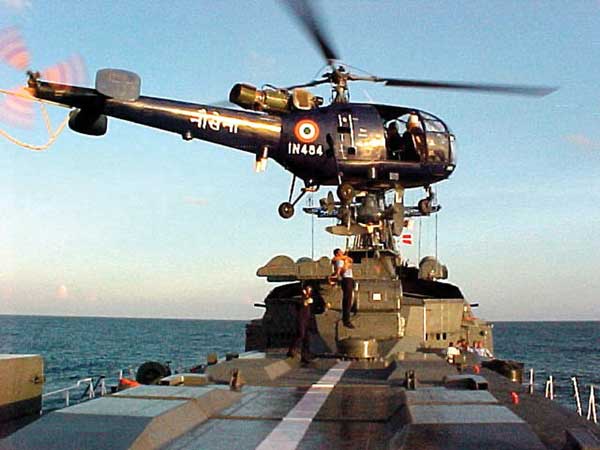The topic for today’s seminar, “China and the Indian Ocean Region” relates to an issue on which there is a dire need for India to focus her attention on very closely. Historically, we have defaulted by never devoting enough time and effort to study the cultures, motivations, aspirations or even the languages of our neighbours. There could be two possible causes for this. Either it is our native hubris which says that our culture being so superior; anything foreign is not worth learning about. Or it is sheer laziness; or a combination of both. Whatever the reason, it is a serious shortcoming which we must hasten to rectify; as in the case of China with a sense of urgency.
In 1949, China wanted to assert its control over Tibet, and sure enough, “liberated” the Tibetans from Buddhism and feudalism. In 1951, to avoid antagonising China, Nehru persuaded the Tibetans to accept Chinese suzerainty over their country.
Although Nehru based his vision of a resurgent Asia on friendship between two of its largest states, there was an inherent and historical conflict of interest in Tibet which was a geographical and political buffer zone where India had inherited special privileges. At the end of the Civil War in 1949, China wanted to assert its control over Tibet, and sure enough, “liberated” the Tibetans from Buddhism and feudalism. In 1951, to avoid antagonising China, Nehru persuaded the Tibetans to accept Chinese suzerainty over their country.
In 1954, India and China signed a pact that set forth the basis of their relationship in the form of “Panchshila” or the five great moral principles that guide the lives of all Buddhists. Although some thought that this was a display of naivete on Nehru’s part, he probably calculated that in the absence of the wherewithal to defend the Himalayan regions, India’s best guarantee of security was to placate if not appease the Communist giant to our north. This started the famous but surreal and short-lived “Hindi-Chini Bhai-Bhai” phase in Indo-Chinese relations.
Despite repeated assurances to the contrary from the Chinese leadership, they commenced a subtle campaign around the mid-1950s; first of cartographic aggression followed by border incursions and skirmishes, and then the startling claim that the actual border lay 100 miles south of the 1914 McMahon Line drawn by the British. In 1959, the Dalai Lama fled Tibet and along with thousands of Tibetan refugees sought asylum in India. Amidst bitter recriminations, China laid claim to 10,400 sq km of Indian territory and demanded “rectification” of the entire border.
On 20th Oct 1962, Chinese forces attacked India. Having pushed our unprepared, ill-equipped and poorly led forces nearly to the plains of Assam, and having occupied strategic points in Ladakh, they withdrew 20 miles behind this newly established line of control. Since then Indo-Chinese relations have rarely been free of tension, which has peaked frequently: with their nuclear test in 1964, with their repeated support to Pakistan, and with their training and arming of insurgent groups in our North-east.
 The first signs of a thaw came with Rajiv Gandhi’s visit in 1988, and there has been a slow but steady improvement in relations ever since then. Today, I would say that there are three distinct markers in our bilateral relationship of which we must take clear note. One, bilateral trade very close to the 20 billion dollars and heading for the 30 billion mark. Two, China’s sustained and substantive military assistance to Pakistan including nuclear weapons. And finally, (something that we tend to gloss over); her illegal occupation of Aksai Chin and outstanding claim to a hundred thousand sq km of our territory.
The first signs of a thaw came with Rajiv Gandhi’s visit in 1988, and there has been a slow but steady improvement in relations ever since then. Today, I would say that there are three distinct markers in our bilateral relationship of which we must take clear note. One, bilateral trade very close to the 20 billion dollars and heading for the 30 billion mark. Two, China’s sustained and substantive military assistance to Pakistan including nuclear weapons. And finally, (something that we tend to gloss over); her illegal occupation of Aksai Chin and outstanding claim to a hundred thousand sq km of our territory.
Against that background, let me revert once again to the arena of maritime history and the account of a curious similarity in our respective past history.
India, as this knowledgeable audience is well aware, has an ancient maritime connection. Artifacts found at the Indus Valley demonstrate the extensive use of the seas by Indian seafarers around 3000 BC. One of the most well-known voyages of this period was undertaken during the reign of Emperor Ashoka of the Maurya dynasty. In the 3rd century BC his daughter, Princess Sangamitra, sailed to Sri Lanka with a tooth of Lord Buddha concealed in her tresses to spread the message of Buddhism. The prowess at sea shown by the Mauryas was followed by the maritime forays of the Pallava and Chola dynasties which set up surrogate empires in South-east Asia.
In the past, we have harped upon and bemoaned our so-called ‘encirclement’ by China. But on our own part we have made very little effort to reach out, to befriend or lend substantive assistance to our maritime neighbours.
The breakdown of Chola power in the middle of the 13th century coincided with the establishment of the Turkish Sultanate in Delhi, and a few centuries later by the rise of the Mughal dynasty in India. Unfortunately, the Turks and the Mughals, with their Central Asian upbringing, had little recognition of the importance of the seas, and hence India’s ancient maritime tradition inevitably suffered.
The decline of India’s sea power by the 14th century was to a large extent responsible for the success of the European adventurers who began to arrive on our shores in the next century. In fact, till the arrival of the Portuguese at Calicut in 1498, no western naval power had appeared on Indian waters. The Portuguese were followed by the Dutch, the British and the French. They came in search of spices, but stayed on to rule this land. The importance of the sea was realised by Indian rulers only when it was too late.
Now let us turn to China. In their case, until the 8th century AD, Chinese sailors were restricted to plying on rivers and inland waterways. Sea-going ships and a maritime tradition developed only in the period between the 9th and 12th centuries when Chinese ships began trading between Japan and Korea. The 13th and 14th centuries saw the establishment of trade links with South-east Asia and India.
The famous seven voyages of the eunuch Chinese Admiral and explorer, Cheng Ho or Zheng He, to the Indian Ocean in the 15th century are the best known ancient examples of interaction between China and the Indian Ocean Region. During these seven voyages the Chinese fleet called at ports in South-east Asia, India, Sri Lanka, the Middle East and East Africa. They built warehouses to support their fleets, appointed ambassadors, dabbled in local politics and in general, established China as the dominant power in the known world. It needs to be remembered that at that juncture, the Chinese fleets were more advanced in design and seamen more skilled than those of any other maritime power in the world.
Yet, in a rather strange turn of events, the death of the Chinese Emperor Yonglo in 1421, followed in quick succession by the death of Zheng He while returning from a voyage to India, sounded the death knell of Chinese maritime power. Future emperors, (just like the Mughals), possessed by the ‘Middle Kingdom’ mentality, banned further naval expeditions and burnt all records of Zheng He’s expeditions. Inevitably, China’s maritime power withered away, and this, in turn, allowed European nations to dominate the seas, and led to the eventual colonisation of China.
So, in a rather remarkable coincidence, the maritime histories of both India and China actually mirror each other. When they wielded maritime power, both countries prospered, and their influence was felt across the world. But when their maritime power declined and decayed, they were invaded and colonised by outside powers.
Both countries ultimately emerged from the shackles of colonialism almost simultaneously in the middle of the 20th century. The two nations followed totally different political systems and developmental models; China’s economic liberalisation in the early 1980s was followed by India a decade later. Today, ‘Chindia’ as the two countries are collectively known, constitutes the fastest growing economic pair in the world.
Unfortunately, the Turks and the Mughals, with their Central Asian upbringing, had little recognition of the importance of the seas, and hence India’s ancient maritime tradition inevitably suffered.
Not surprisingly, both countries are growing maritime powers too, whose interests overlap each other in several areas. They are also nuclear powers, although each follows a different dogma. Consequently, unless the rise of both the countries is managed with wisdom, maturity and foresight, a faultline could form, not just of Indo-Sinic civilisations but also of conflicting interests which could lead to tensions, frictions, polarisation and eventually, conflict as predicted by Samuel Huntingdon. This constitutes a frightening scenario with not just regional but international implications.
Because of her closed political system China’s motives and actions present an enigma to the entire world. To India, China’s actions in the Indian Ocean Region are of particular interest. The PLA Navy’s maritime forays into the Indian Ocean, while not as grandiose or frequent as those by Zheng He’s fleets of yore, do arouse our interest and curiosity. As I am sure, do our visits to East Asia and exercises in the South China sea do in China.
Over the past few years, pragmatic politics on both sides have resulted in a sustained dialogue over the boundary issue, which has yielded some tangible results. Bilateral trade between India and China has the potential to become the most important partnership for India in the years ahead. On the military front, we have signed a MoU on Defence Cooperation in 2006, and our navies have conducted basic exercises on two occasions.
China has also been engaged in expanding her Navy and making it a blue water force over the past decade. She has bought advanced naval weaponry from Russia and has also achieved considerable success in indigenously developing several weapon platforms and systems such as ICBMs, combat aircraft, and nuclear submarines as well as SLBMs of substantial range.
Because of her closed political system China’s motives and actions present an enigma to the entire world.
So on the one hand, there is this immense possibility of cooperation with a peaceful China for mutual prosperity. On the other hand, there is the spectre of a possible clash due to conflict of interests or outstanding disputes.
Because of this, it is important that we countries do not see our relations as a zero sum game for either. India and China are still to overcome huge challenges. Both have large populations, a large percentage of which live below the poverty line. Both suffer from a resource and energy deficit and have to import most of their energy requirements a large part of it across the Indian Ocean Region. Underlying all this is the realisation that both have much to gain through bilateral cooperation.
There is also a need for us in India to review our mindsets and attitudes. In the past, we have harped upon and bemoaned our so-called ‘encirclement’ by China. But on our own part we have made very little effort to reach out, to befriend or lend substantive assistance to our maritime neighbours. So short-sighted have been our policies that whenever we have some given (grudging) assistance, we have sought not just instant returns but demeaning subservience from the recipient.
The appropriate counter to China’s encirclement of India is to build our own relations, particularly in our neighbourhood, on the basis of our national interests and magnanimity towards smaller neighbours – something espoused by Mr Gujral during his tenure as the Prime Minister.
India and China together combined represent the hopes and aspirations of a large percentage of the developing world. As responsible powers, it is our duty to ensure that both of us ‘rise peacefully’.
My own recent experience with many of these countries clearly indicates that they see a democratic, secular and moderate India as a more attractive and viable alternative provided we are willing to go that extra step to meet their legitimate security requirements.
In short, we should stop being surprised and indignant if China follows Disraeli’s dictum and acts in her own national interests. It is entirely up to us and high time that we did exactly the same.
India and China together combined represent the hopes and aspirations of a large percentage of the developing world. As responsible powers, it is our duty to ensure that both of us ‘rise peacefully’. The logic that strength breeds respect, and therefore the progress in our bilateral relations with China can be ascribed to our growing national power, both economic and military, is probably true. However, lasting relationships can only be built on the basis of mutual trust, which can only be achieved through a clear understanding of each other’s intentions.
Before I conclude, let me leave you a thought from Martin van Creveld’s book “War & Military Thought”. He says in the context of ancient Chinese military writings: “Finally the texts in question cannot be understood without bearing in mind the underlying way in which Chinese culture approaches war. War was neither a means in the hands of policy, nor an end in itself. Instead it was regarded as an evil, albeit one that was sometimes rendered necessary by the imperfections of the world.” Sun Tzu, the oldest and most famous Chinese general of all says in this context “Weapons are instruments of ill omen”.






